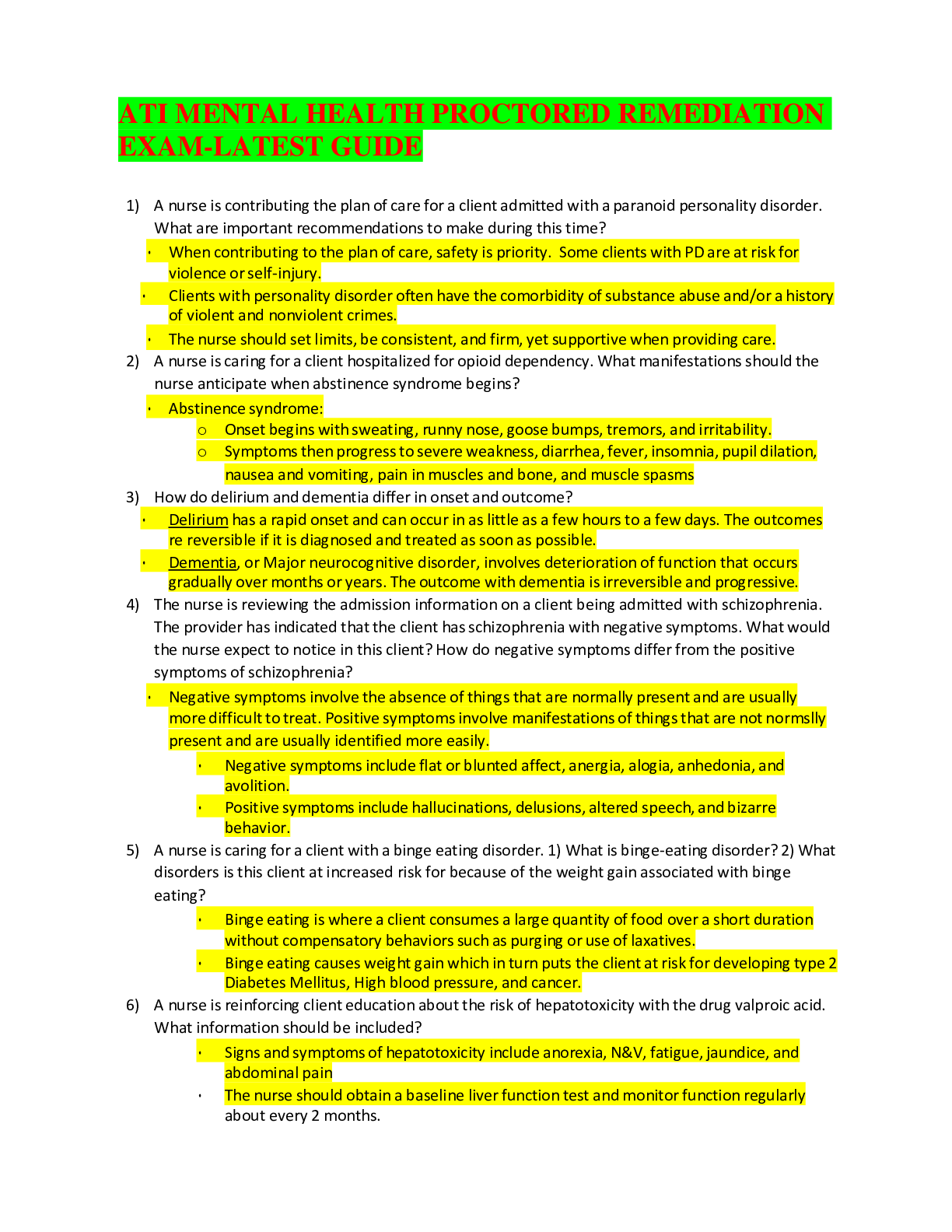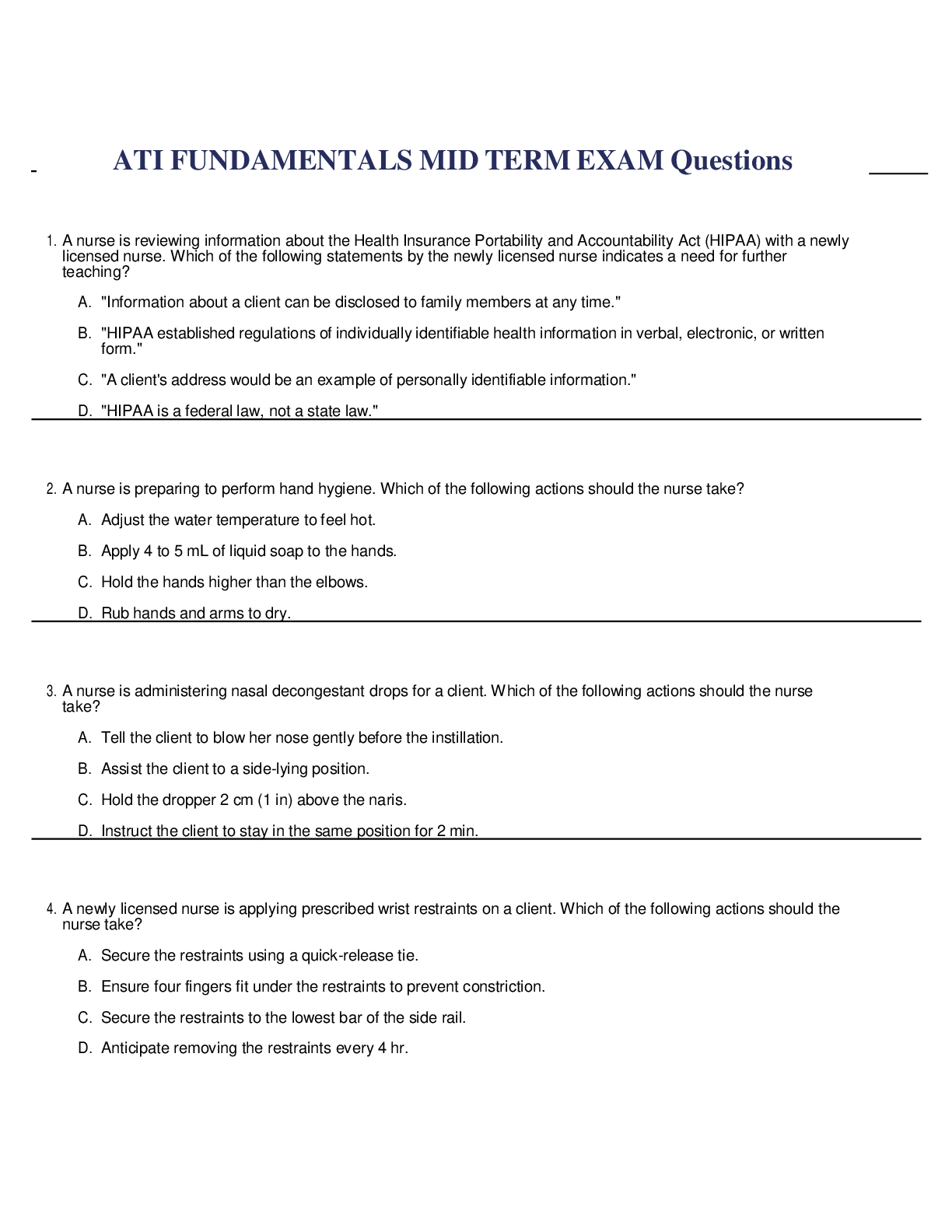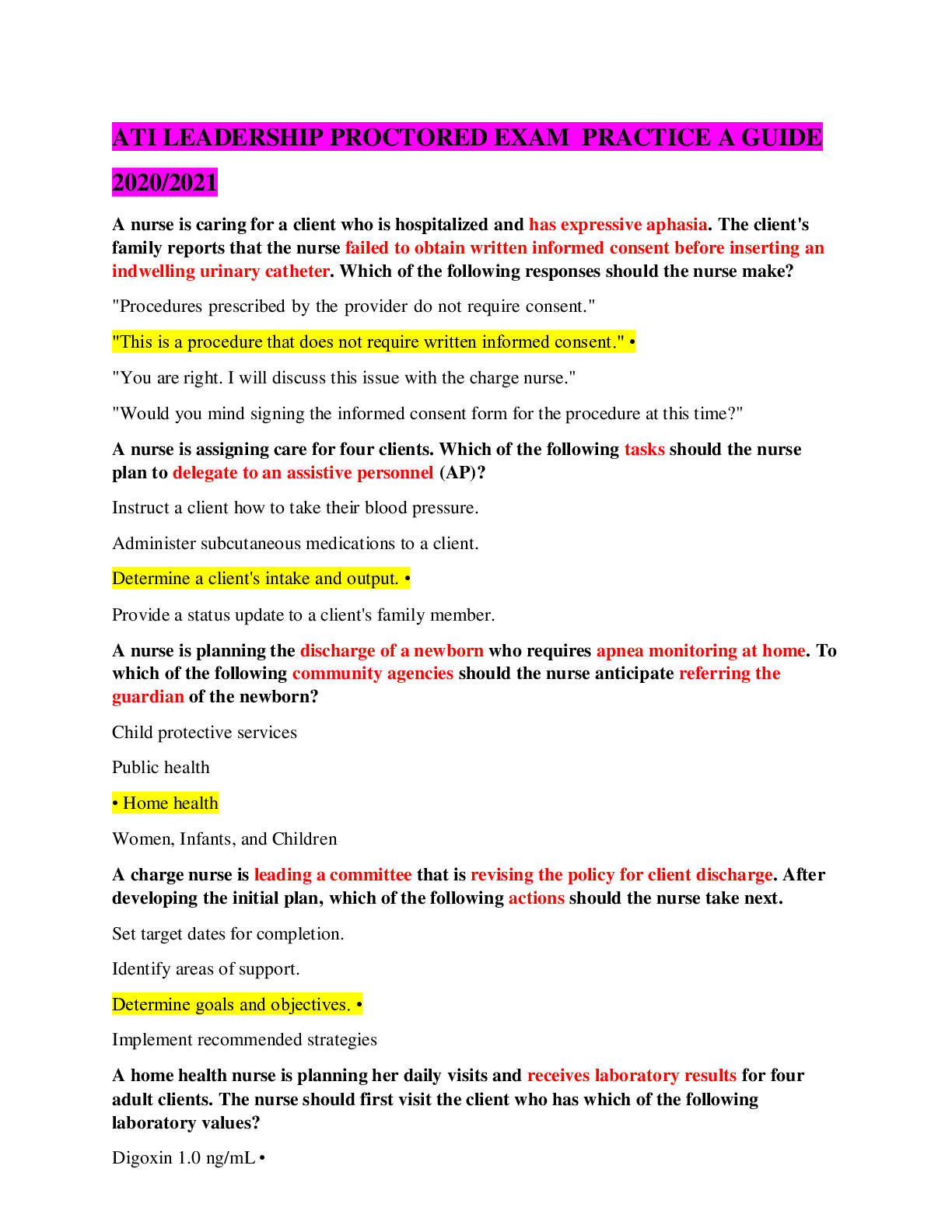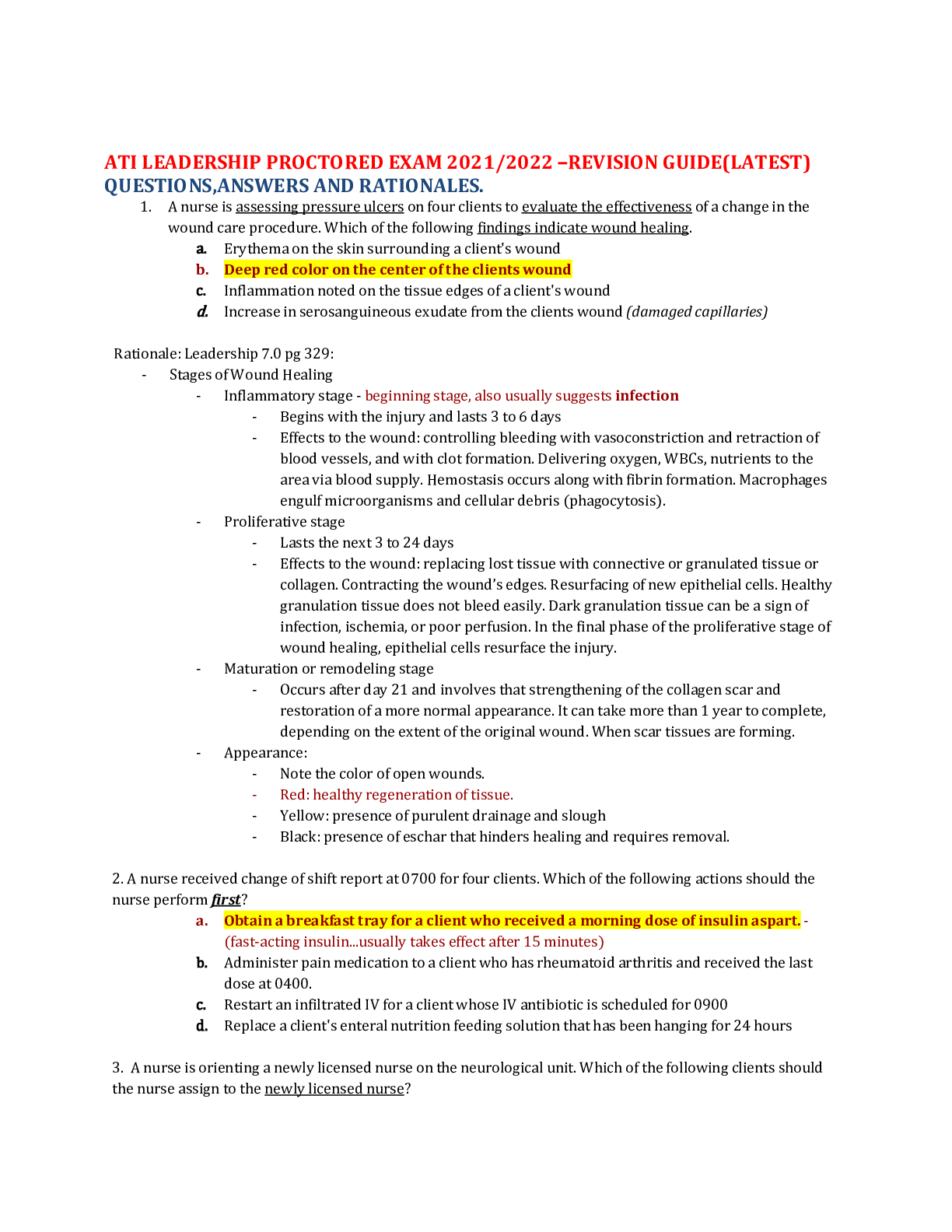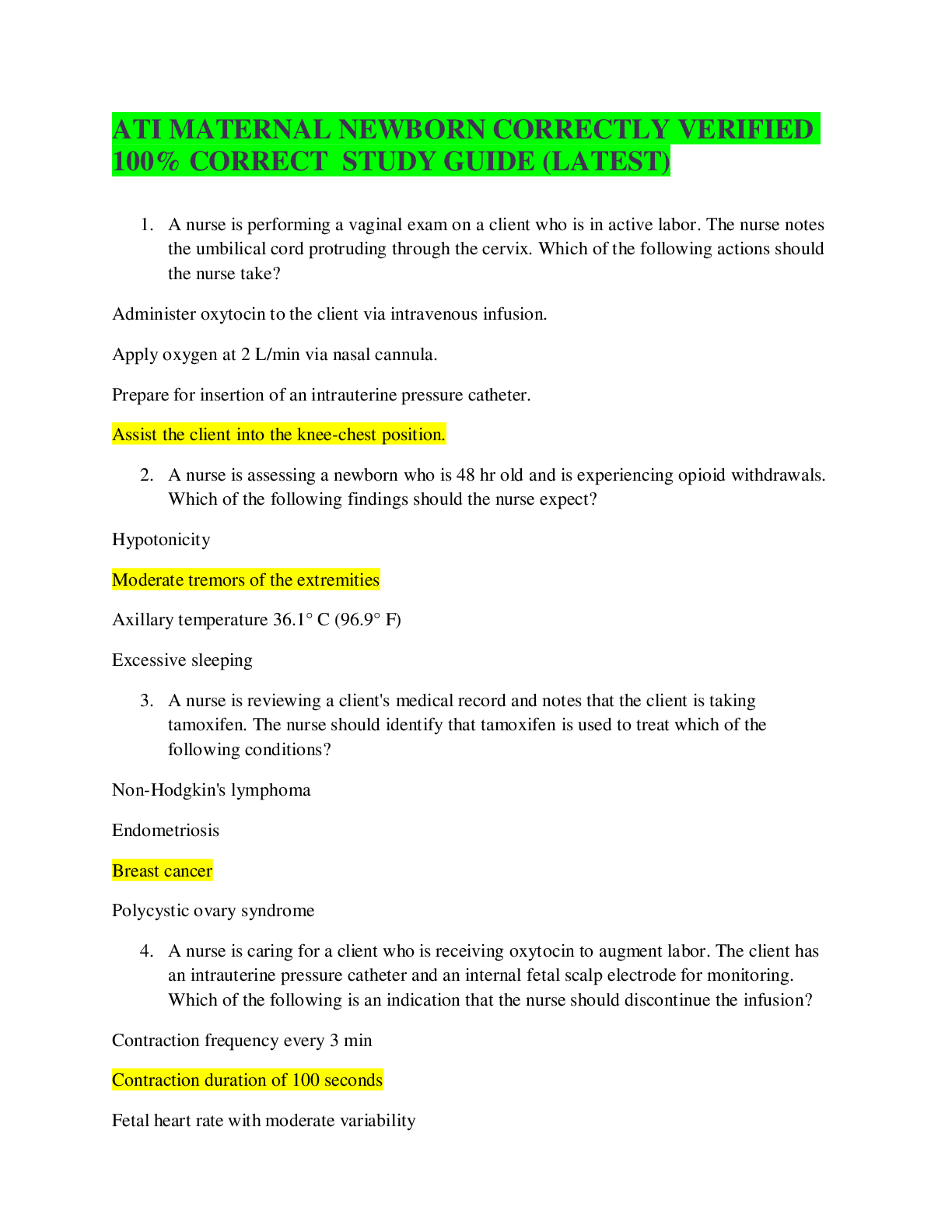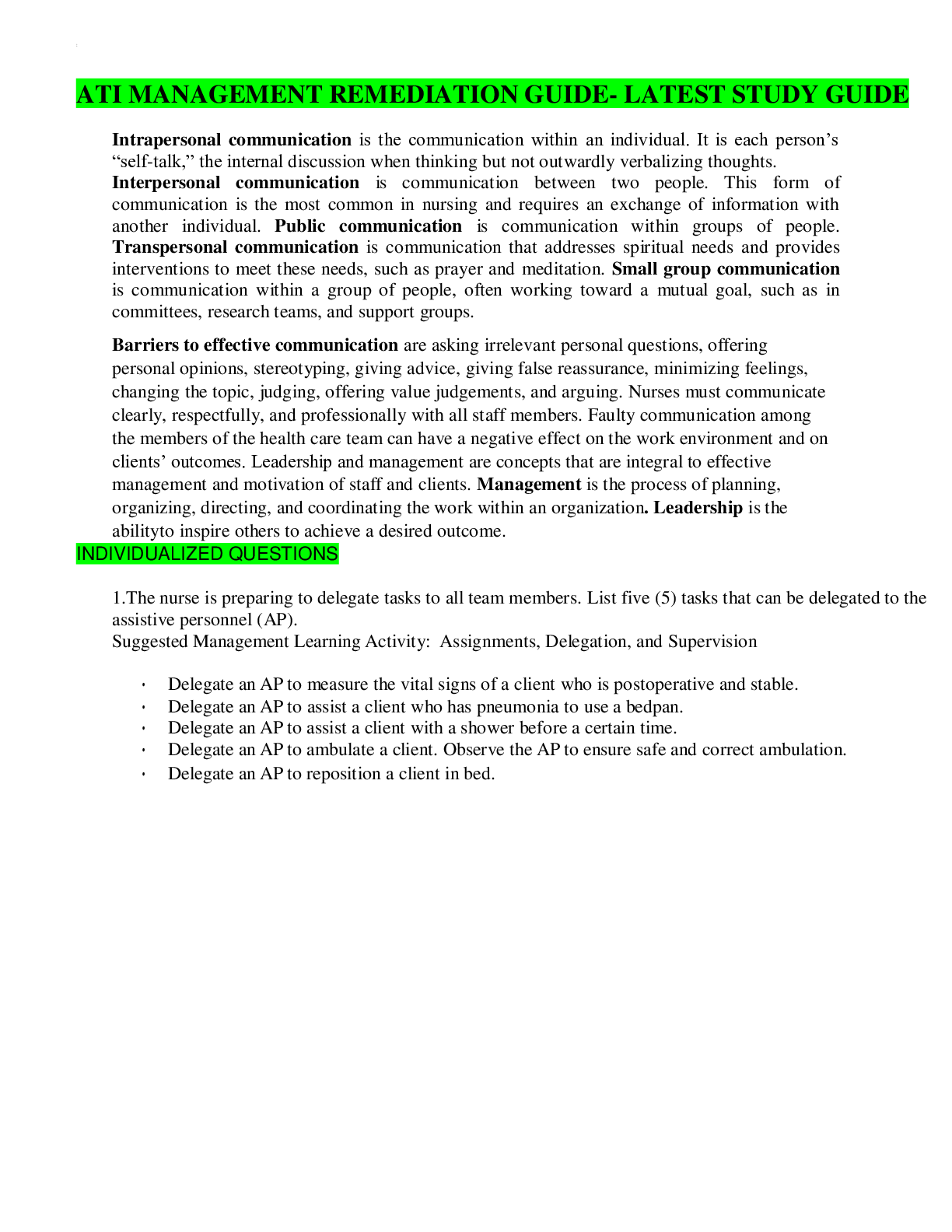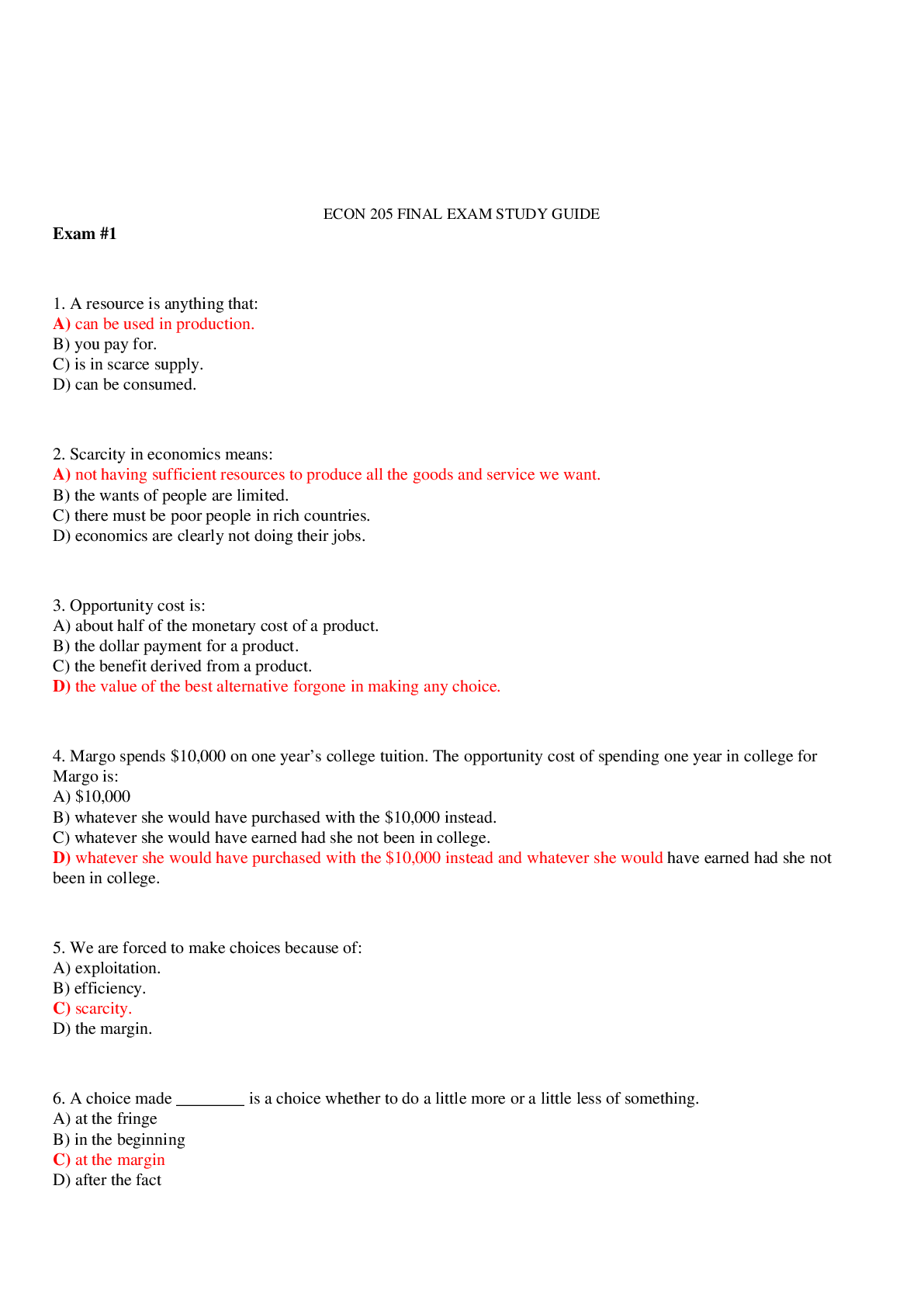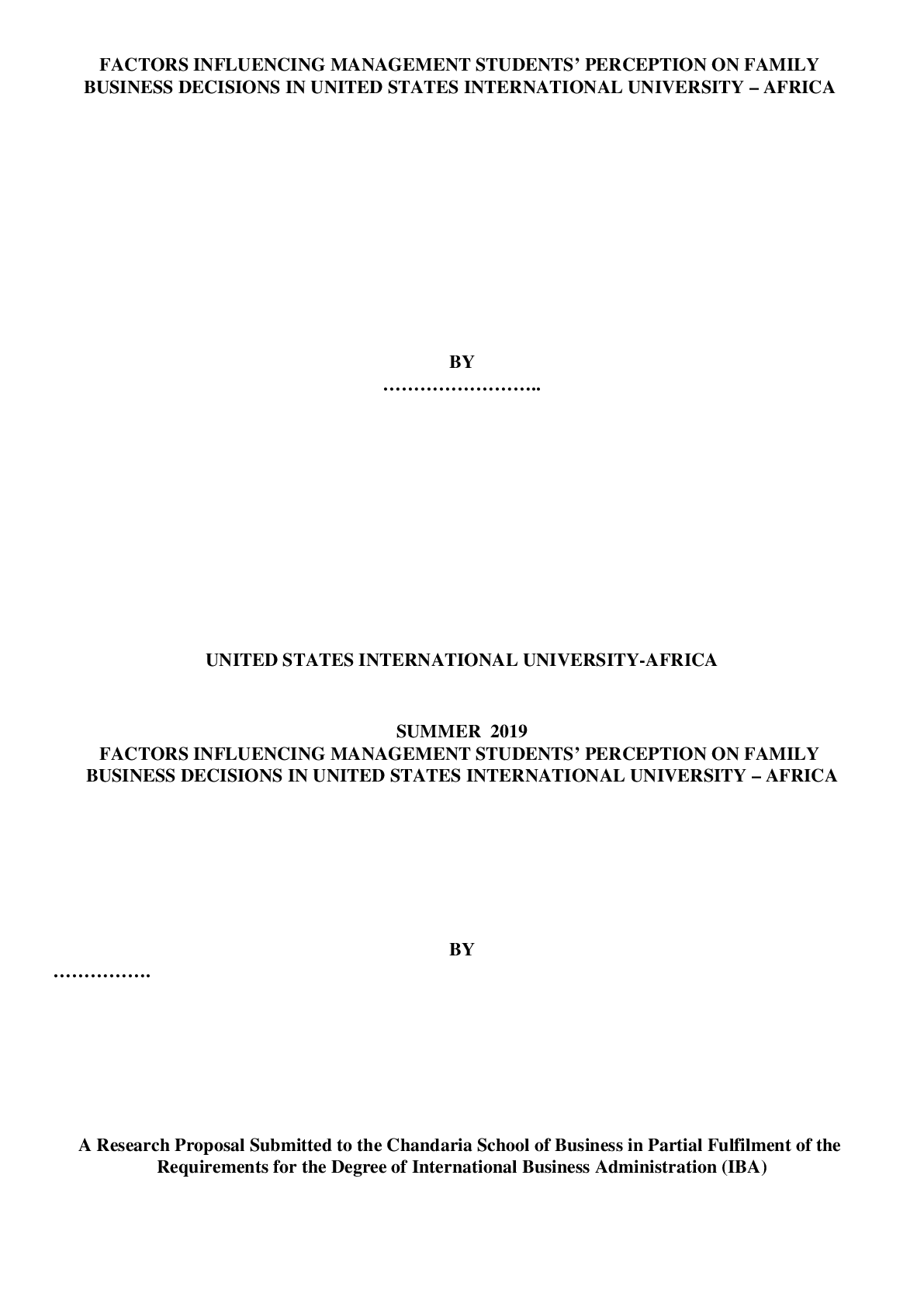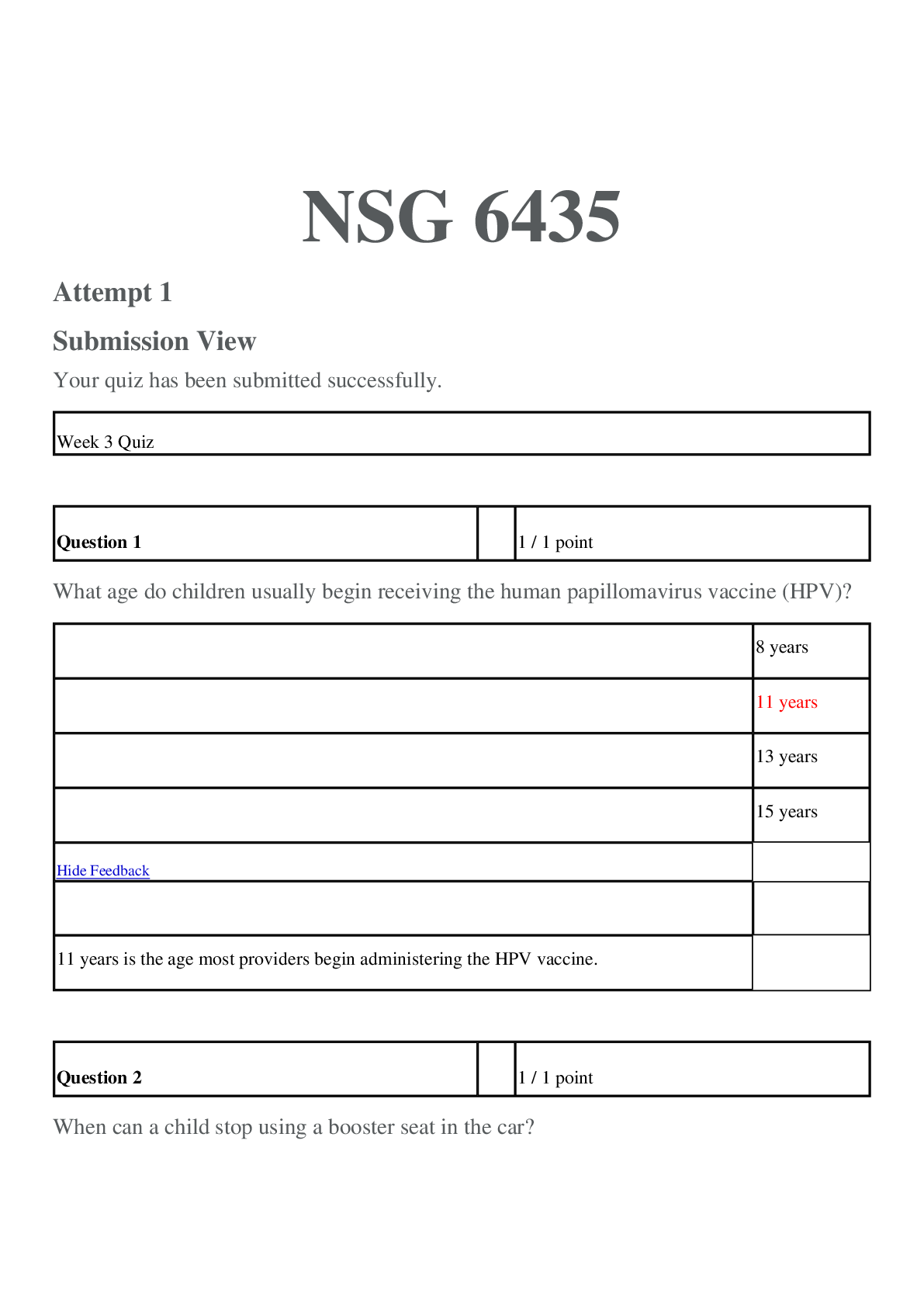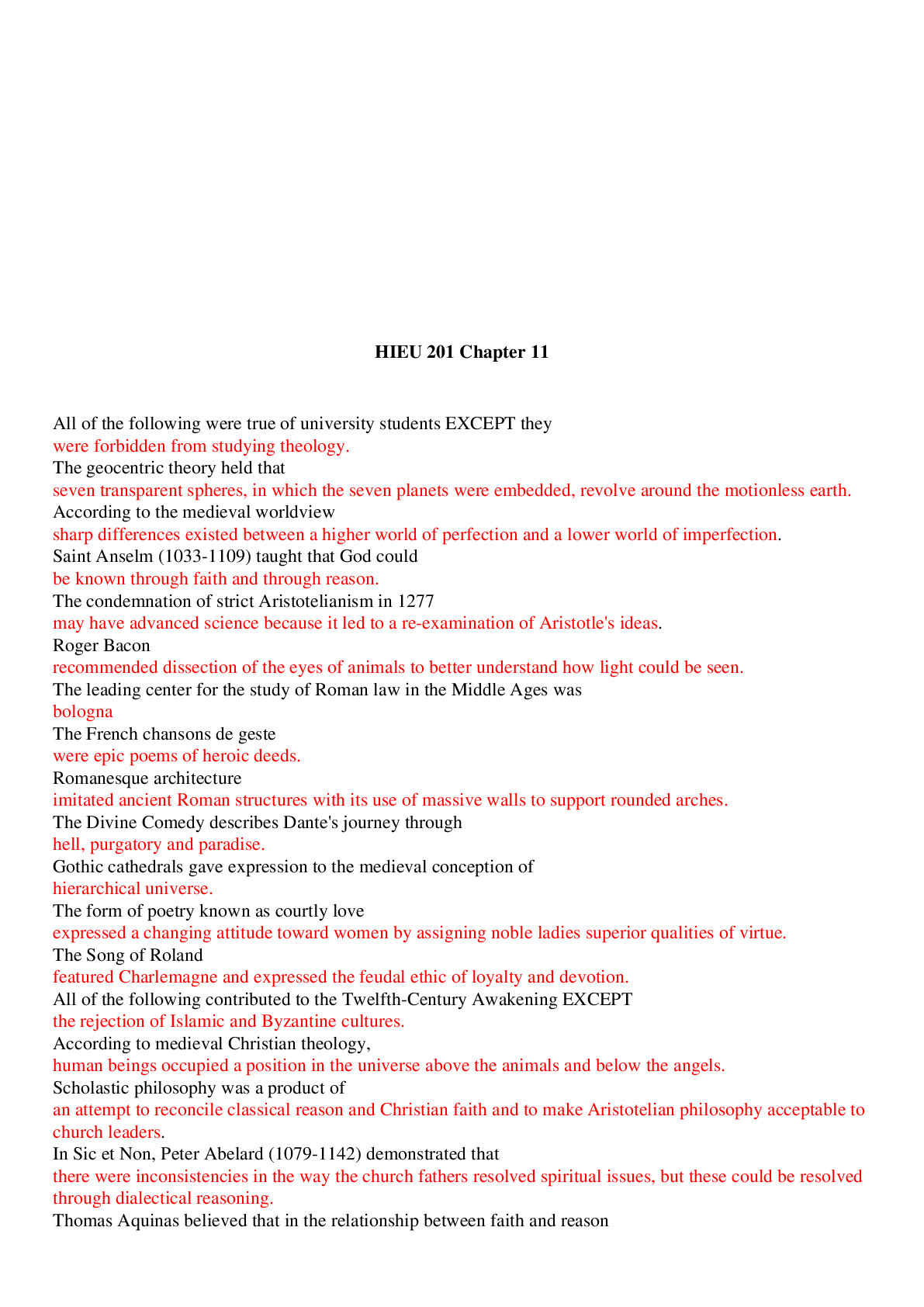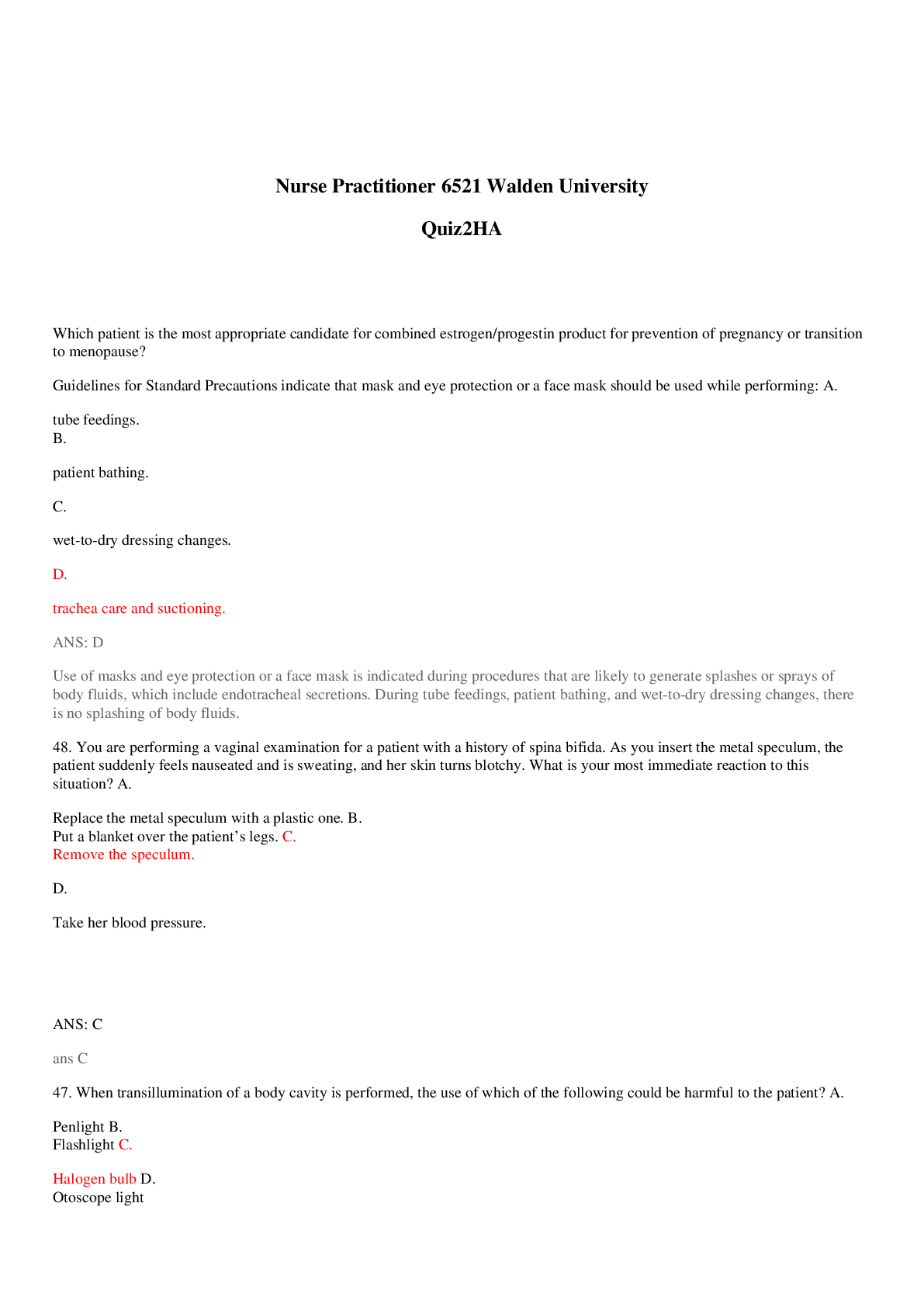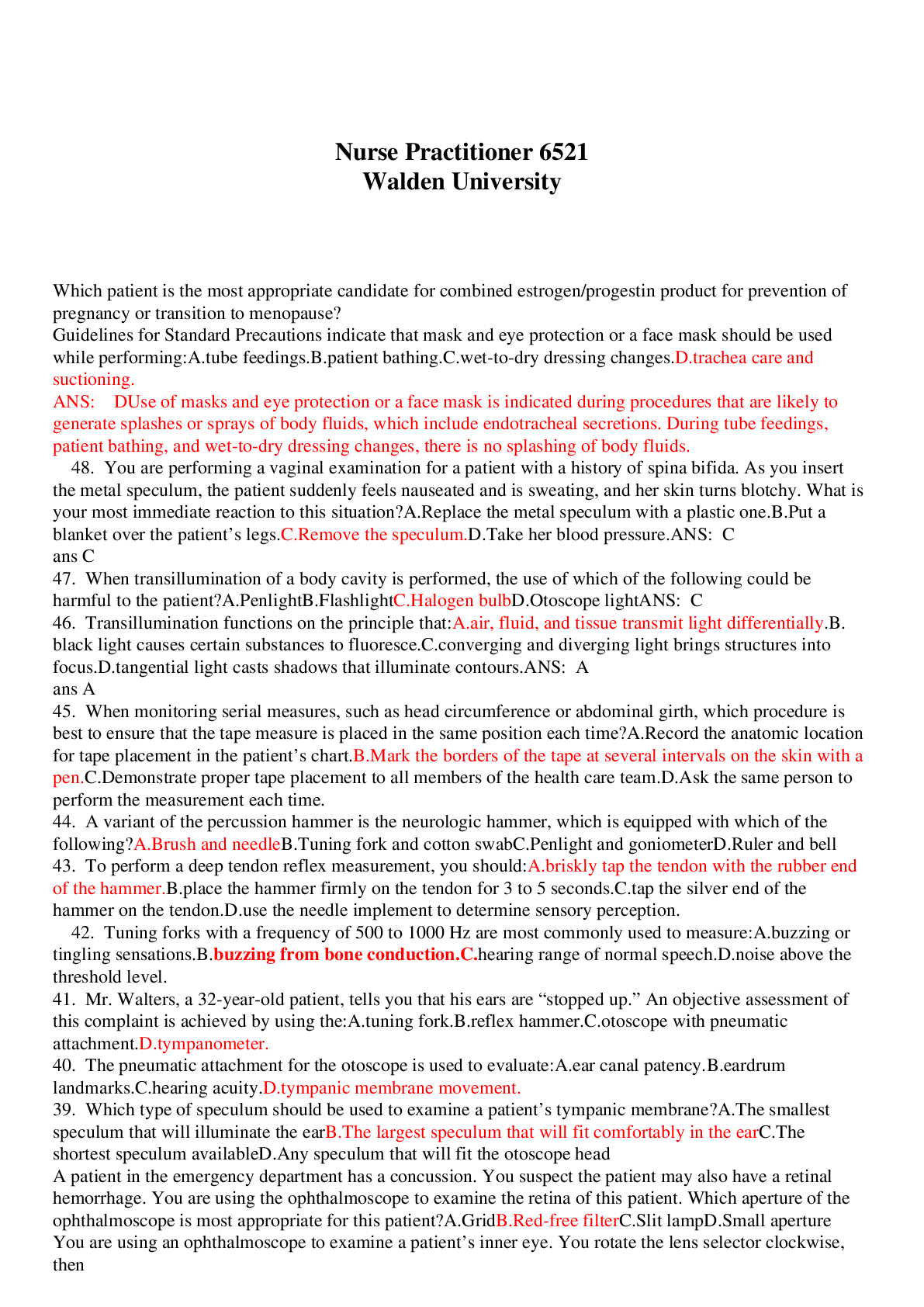*NURSING > EXAM > Test_Bank_for_Pharmacotherapeutics__for_Nurse_Practitioner_____Prescribers_3rd_Edition_by_Woo (All)
Test_Bank_for_Pharmacotherapeutics__for_Nurse_Practitioner_____Prescribers_3rd_Edition_by_Woo
Document Content and Description Below
Chapter 1: Th Role of th Nurse Practitioner as Prescriber Multiple Choice Identify th choice that best completes th statement or answers th question. _ 1. Nurse practitioner prescriptive autho... rity is regulated by: A. Th National Council of State Boards of Nursing B. Th U.S. Drug Enforcement Administration C. Th State Board of Nursing for each state D. Th State Board of Pharmacy _ 2. Physician Assistant (PA) prescriptive authority is regulated by: A. Th National Council of State Boards of Nursing B. Th U.S. Drug Enforcement Administration C. Th State Board of Nursing D. Th State Board of Medical Examiners _ 3. Clinical judgment in prescribing includes: A. Factoring in th cost to th patient of th medication prescribed B. Always prescribing th newest medication available for th disease process C. Handing out drug samples to poor patients D. Prescribing all generic medications to cut costs _ 4. Criteria for choosing an effective drug for a disorder include: A. Asking th patient what drug thy think would work best for thm B. Consulting nationally recognized guidelines for disease management C. Prescribing medications that are available as samples before writing a prescription D. Following U.S. Drug Enforcement Administration (DEA) guidelines for prescribing _ 5. Nurse practitioner practice may thrive under health-care reform due to: A. Th demonstrated ability of nurse practitioners to control costs and improve patient outcomes B. Th fact that nurse practitioners will be able to practice independently C. Th fact that nurse practitioners will have full reimbursement under health-care reform D. Th ability to shift accountability for Medicaid to th state level Chapter 1: Th Role of th Nurse Practitioner as Prescriber Answer Section MULTIPLE CHOICE 1. ANS: C PTS: 1 2. ANS: D PTS: 1 3. ANS: A PTS: 1 4. ANS: B PTS: 1 5. ANS: A PTS: 1 Chapter 2: Review of Basic Principles of Pharmacology Multiple Choice Identify th choice that best completes th statement or answers th question. _ 1. A patient’s nutritional intake and lab work reflects hypoalbuminemia. This is critical to prescribing because: A. Distribution of drugs to target tissue may be affected B. Th solubility of th drug will not match th site of absorption C. Thre will be less free drug available to generate an effect D. Drugs bound to albumin are readily excreted by th kidney _ 2. Drugs that have a significant first-pass effect: A. Must be given by th enteral (oral) route only B. Bypass th hepatic circulation C. Are rapidly metabolized by th liver and may have little if any desired action D. Are converted by th liver to more active and fat-soluble forms _ 3. Th route of excretion of a volatile drug will likely be: A. Th kidneys B. Th lungs C. Th bile and feces D. Th skin _ 4. Medroxyprogesterone (Depo Provera) is prescribed IM to create a storage reservoir of th drug. Storage reservoirs: A. Assure that th drug will reach its intended target tissue B. Are th reason for giving loading doses C. Increase th length of time a drug is available and active D. Are most common in collagen tissues _ 5. Th NP chooses to give cephalexin every 8 hours based on knowledge of th drug’s: A. Propensity to go to th target receptor B. Biological half-life C. Pharmacodynamics D. Safety and side effects _ 6. Azithromycin dosing requires th first day’s dose be twice those of th othr 4 days of th prescription. This is considered a loading dose. A loading dose: A. Rapidly achieves drug levels in th thrapeutic range B. Requires four to five half-lives to attain C. Is influenced by renal function D. Is directly related to th drug circulating to th target tissues _ 7. Th point in time on th drug concentration curve that indicates th first sign of a thrapeutic effect is th: A. Minimum adverse effect level B. Peak of action C. Onset of action D. Thrapeutic range _ 8. Phenytoin requires a trough level be drawn. Peak and trough levels are done: A. When th drug has a wide thrapeutic range B. When th drug will be administered for a short time only C. When thre is a high correlation between th dose and saturation of receptor sites D. To determine if a drug is in th thrapeutic range _ 9. A laboratory result indicates th peak level for a drug is above th minimum toxic concentration. This means that th: A. Concentration will produce thrapeutic effects B. Concentration will produce an adverse response C. Time between doses must be shortened D. Duration of action of th drug is too long _ 10. Drugs that are receptor agonists may demonstrate what property? A. Irreversible binding to th drug receptor site B. Up-regulation with chronic use C. Desensitization or down-regulation with continuous use D. Inverse relationship between drug concentration and drug action _ 11. Drugs that are receptor antagonists, such as beta blockers, may cause: A. Down-regulation of th drug receptor B. An exaggerated response if abruptly discontinued C. Partial blockade of th effects of agonist drugs D. An exaggerated response to competitive drug agonists _ 12. Factors that affect gastric drug absorption include: A. Liver enzyme activity B. Protein-binding properties of th drug molecule C. Lipid solubility of th drug D. Ability to chew and swallow _ 13. Drugs administered via intravenous (IV) route: A. Need to be lipid soluble in order to be easily absorbed B. Begin distribution into th body immediately C. Are easily absorbed if thy are nonionized D. May use pinocytosis to be absorbed _ 14. When a medication is added to a regimen for a synergistic effect, th combined effect of th drugs is: A. Th sum of th effects of each drug individually B. Greater than th sum of th effects of each drug individually C. Less than th effect of each drug individually D. Not predictable, as it varies with each individual _ 15. Which of th following statements about bioavailability is true? A. Bioavailability issues are especially important for drugs with narrow thrapeutic ranges or sustained release mechanisms. B. All brands of a drug have th same bioavailability. C. Drugs that are administered more than once a day have greater bioavailability than drugs given once daily. D. Combining an active drug with an inert substance does not affect bioavailability. _ 16. Which of th following statements about th major distribution barriers (blood-brain or fetal- placental) is true? A. Water soluble and ionized drugs cross thse barriers rapidly. B. Th blood-brain barrier slows th entry of many drugs into and from brain cells. C. Th fetal-placental barrier protects th fetus from drugs taken by th mothr. D. Lipid soluble drugs do not pass thse barriers and are safe for pregnant women. _ 17. Drugs are metabolized mainly by th liver via Phase I or Phase II reactions. Th purpose of both of thse types of reactions is to: A. Inactivate prodrugs before thy can be activated by target tissues B. Change th drugs so thy can cross plasma membranes C. Change drug molecules to a form that an excretory organ can excrete D. Make thse drugs more ionized and polar to facilitate excretion _ 18. Once thy have been metabolized by th liver, th metabolites may be: A. More active than th parent drug B. Less active than th parent drug C. Totally “deactivated” so that thy are excreted without any effect D. All of th above _ 19. All drugs continue to act in th body until thy are changed or excreted. Th ability of th body to excrete drugs via th renal system would be increased by: A. Reduced circulation and perfusion of th kidney B. Chronic renal disease C. Competition for a transport site by anothr drug D. Unbinding a nonvolatile drug from plasma proteins _ 20. Steady state is: A. Th point on th drug concentration curve when absorption exceeds excretion B. When th amount of drug in th body remains constant C. When th amount of drug in th body stays below th MTC D. All of th above _ 21. Two different pain meds are given togethr for pain relief. Th drug-drug interaction is: A. Synergistic B. Antagonistic C. Potentiative D. Additive _ 22. Actions taken to reduce drug-drug interaction problems include all of th following EXCEPT: A. Reducing th dose of one of th drugs B. Scheduling thir administration at different times C. Prescribing a third drug to counteract th adverse reaction of th combination ...............................................................................................................................................................CONTINUED [Show More]
Last updated: 1 year ago
Preview 1 out of 160 pages
Instant download
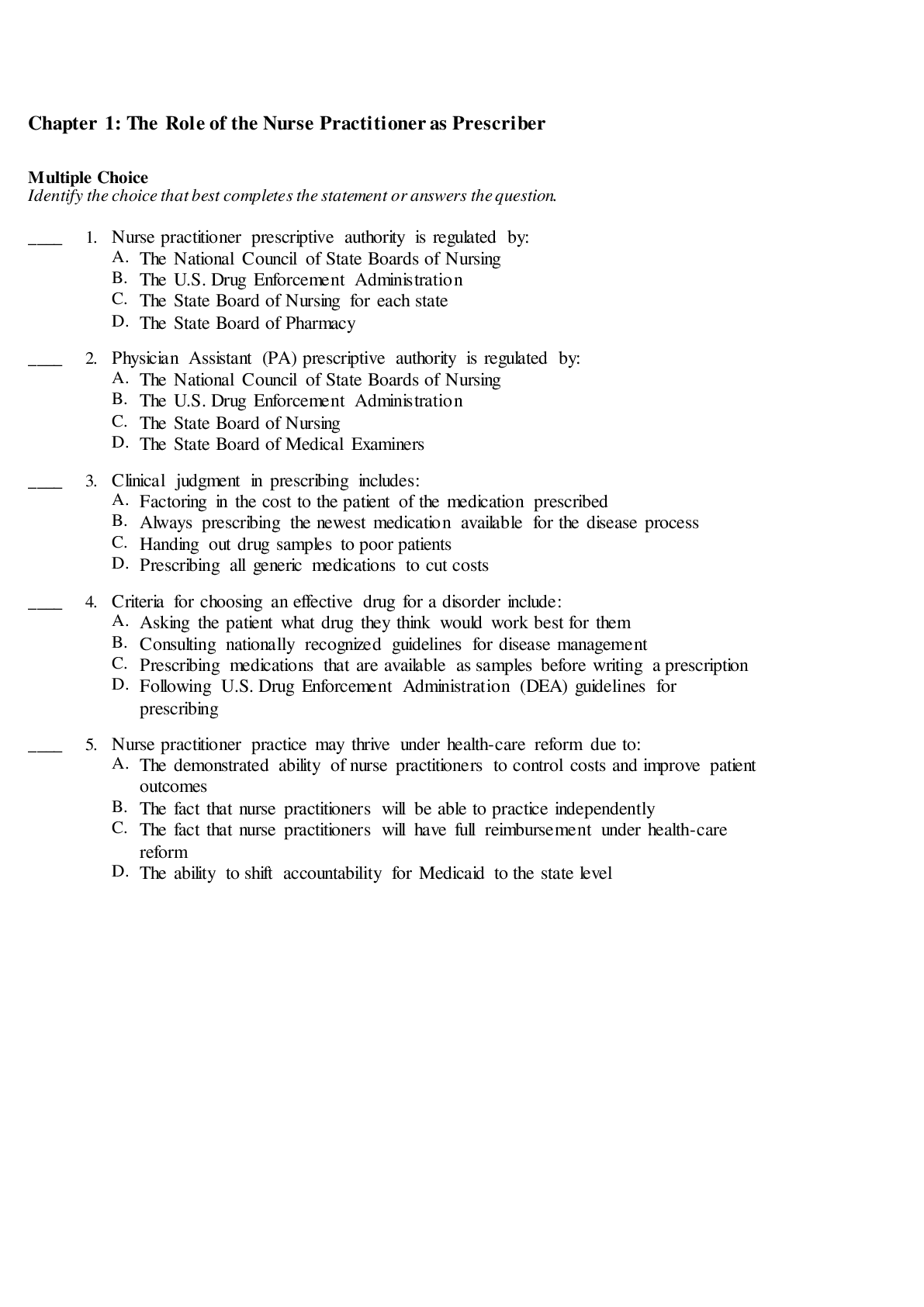
Buy this document to get the full access instantly
Instant Download Access after purchase
Add to cartInstant download
Reviews( 0 )
Document information
Connected school, study & course
About the document
Uploaded On
Nov 18, 2021
Number of pages
160
Written in
Additional information
This document has been written for:
Uploaded
Nov 18, 2021
Downloads
0
Views
50



